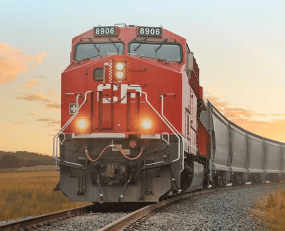
Canadian Pacific Railway has offered to buy Kansas City Southern railway for $25.2bn. The proposal represents an attempt to create the first rail network to span Canada, US and Mexico. The deal is very large, totalling $29bn if the assumption Kansas City Southern’s debt is included although not quite as great as the purchase of BNSF by Berkshire Hathaway in 2010 for $50bn.
The merging of the two rail networks would have a significant impact on the structure of the North American rail market. As articulated by Canadian Pacific’s President and Chief Executive Officer Keith Creel; “This will create the first US-Mexico-Canada railroad…CP and KCS have been the two best performing Class 1 railroads for the past three years on a revenue growth basis”. As such the proposal will have to be approved by the US Surface Transportation Board amongst other regulatory authorities, probably delaying the implementation of the purchase by many months.
The rationale of the purchase is Canadian Pacific’s bullish view on the prospects for international trade both within North America but also with other regions of the world. At present this is perceived to be very strong, with the upsurge in traffic volumes over the past several months resulting in considerable congestion on rail networks and interfacing facilities such as container ports.
Canadian Pacific assert that the merger of the two networks will mean that “grain, automotive, auto-parts, energy, intermodal, and other shippers, will benefit from the increased efficiency and simplicity of the combined network, which is expected to spur greater rail-to-rail competition and support customers in growing their rail volumes”. Quite possibly the creation of a pan-North American rail service will result in increased efficiencies, however, market segments such as automotive and energy are seeing substantial structural change and this is likely to have the ability to change both traffic patterns and volumes so the merger might have more risk in it than many assume. However, what it indirectly illustrates is that the wider growth in international trade, in part due to increasing e-retail volumes, is driving investment in transport infrastructure.
Source: Transport Intelligence, March 23, 2021
Author: Thomas Cullen